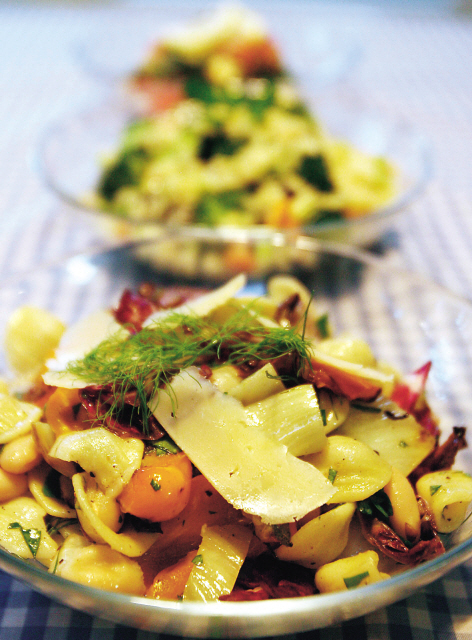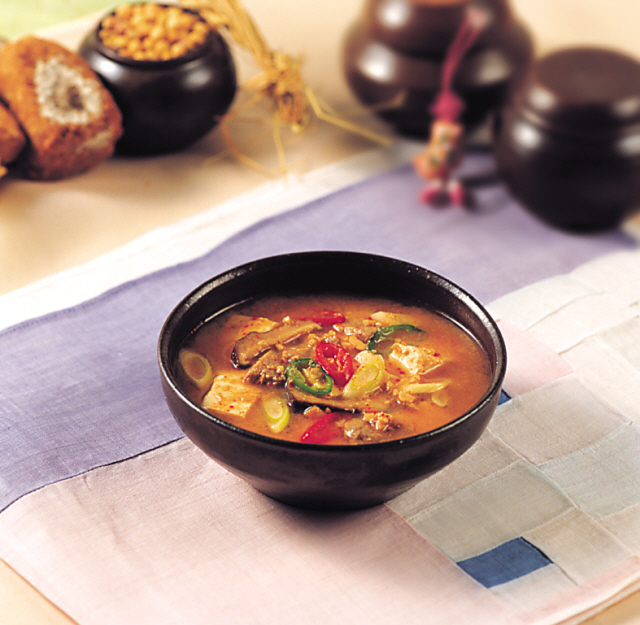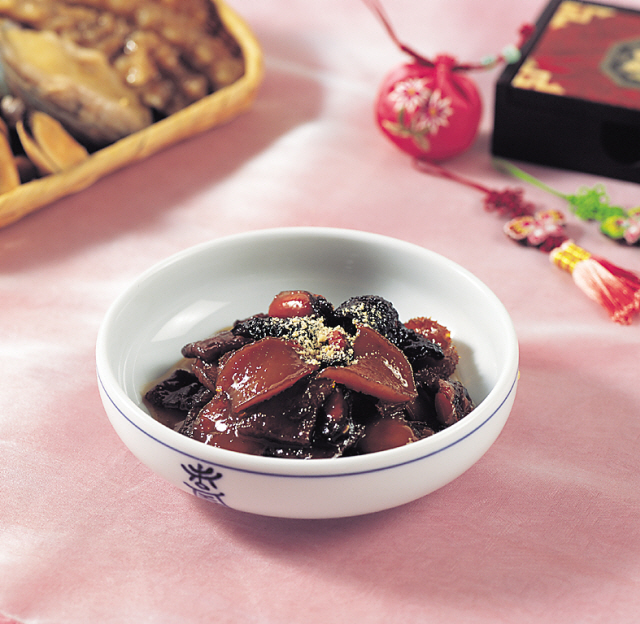What is orzo? How do you cook Israeli
couscous? Can you say orecchiette?
There’s a dizzying array of dry pastas
on store shelves. Some have fancy names for something that’s basically
macaroni.
We’re giving big pasta like elbows and corkscrews the summer
off and downsizing for potluck salads.
Too often dainty pastas like orzo
and ditalini wind up in soups, but they’re great for salads and just as
economical as their big sisters.
And they cook more quickly because of
their size, so you can make pasta salad in a snap.
Larger pasta shapes
tend to overwhelm the other ingredients. Small ones make room for scooping it
all up in every bite.
Pasta salads are must-haves for feeding a crowd
because they go a long way.
When making, allow about 1 cup of salad per
serving if you’re having just one salad and a half cup if you have two or more
salads. About 50 percent of your salad should be made up of pasta and the rest
should be vegetables or other ingredients.
Here are some smaller shapes
to try:
Orzo is rice-shaped and less than 1/4-inch long when cooked.
Besides salads and soups, you can serve it as a side dish or stuff it in
hollowed tomatoes.
Couscous comes in two sizes. The smaller version is
sometimes mistaken for a grain; the larger, also called Israeli couscous, is
pearl-sized. The latter has been showing up in more and more recipes, including
salads. Israeli couscous adds little starchy bursts to today’s Israeli Couscous
with Watermelon, Watercress and Feta.
In Italian, orecchiette
(oh-rayk-kee-EHT-tay) means “little ears,” after the pasta’s shape. Orecchiette
is a good change-up for salad because it’s not super small but still not
huge.
Whatever pasta you choose, putting it in a salad offers an easy way
to use the other bits and pieces lurking in your refrigerator. Have half a bell
pepper or cucumber? Chop it up and toss it in.
You can use just about any
raw or cooked vegetable in a pasta salad. Meats, too. Think chunks of ham or
salami, prosciutto and even leftover rotisserie chicken. Shredded or cut up
cheeses are also good additions.
Smaller pastas do better with a
vinaigrette-style dressing. That way, they don’t get lost in heavy mayonnaise
and other creamy dressings.
A fruity extra-virgin olive oil works best,
but you also can use regular olive oil.
And if you can’t bear to stray
from the corkscrew or penne pastas, you can find mini versions. A few years ago,
Barilla pasta introduced its piccolini (meaning “little ones”) line of mini
pastas. Look for farfelle (bowties), penne, fusilli and
gemelli.
Ditalini chopped salad Serves:
16
Preparation time: 20 minutes
Total time: 45 minutes
This
is a perfect potluck salad because it feeds a crowd. Bell peppers, cucumber and
romaine add crunch, while salami adds that meaty taste. You could substitute
leftover chicken for salami.
● 16 ounces ditalini pasta
● 2 cups
cubed provolone or shredded Italian cheese blend
● 4 cups chopped
romaine
● 1 medium red onion, diced
● 1 cup chopped red, yellow or
orange peppers
● 1/4 cup chopped flat-leaf parsley
● 1 cup seeded
and diced cucumber
●1/3 pound cubed salami
For
dressing● 2 large shallots, peeled
● 3 cloves garlic,
peeled
● 1/4 cup Dijon mustard
● 1/4 cup red wine vinegar
●
2 teaspoons sugar
● 1/2 cup olive oil
● Salt and pepper to
taste
Cook the pasta according to package directions. Drain and spread it
out on a baking sheet for 30 minutes.
In a large serving bowl, combine
pasta, cheese, romaine, red onion, peppers, parsley, cucumber and
salami.
For the dressing, place the shallots and garlic in a blender or
food processor. Pulse several times to chop. Add the Dijon, red wine vinegar and
sugar. Pulse to combine.
With the blender or processor running, slowly
add the oil in a steady stream to emulsify. Taste and adjust seasonings and
ingredients as necessary. Season with salt and pepper to taste. Pour the
dressing over the salad and toss to combine.
From and tested by Susan M.
Selasky in the Free Press Test Kitchen.
Orzo and broccoli
salad Serves: 8
Preparation time: 15
minutes
Total time: 30 minutes
This salad gets a lot of flavor
from chopped olives and garlic. Use good-quality red wine vinegar, and
substitute 1 tablespoon chopped fresh oregano for dried, if desired.
● 4
ounces orzo
● 1 large head broccoli, cut into small florets (about 5-6
cups)
● 1/2 cup finely chopped green onions
● 1/2 cup sliced black
olives
● 1 small carrot, grated
● 1 cup corn, cut fresh from the
cob, optional
● 1 teaspoon dried leaf oregano
● 1 clove garlic,
pressed or crushed and finely minced
● 1/4 teaspoon ground black
pepper
● 1/3 cup olive oil
● 1/4 cup red wine vinegar
●
Salt to taste
Cook orzo following package directions. During the last 3
minutes, add the broccoli. Drain in a colander and rinse lightly with cold
water.
In a large bowl, place the orzo and broccoli, green onions,
olives, carrot, corn if using, oregano, garlic and pepper.
In a glass
measuring cup, whisk together the oil and red wine vinegar, and then toss with
the salad ingredients. Add salt to taste. Chill one hour before
serving.
Adapted from www.about.com.
 |
| This summer’s
pasta salads feature small pasta, like in this orecchiette with grilled
vegetables. (MCT) |
Orecchiette
salad with grilled vegetablesServes: 8
Preparation
time: 10 minutes
Total time: 30 minutes
Grilling lessens the
natural bitterness of radicchio. A splash of sweet balsamic vinegar balances
it.
● 8 ounces orecchiette (about 2 cups)
● 1 small head
radicchio, halved lengthwise and cored
● 2 small bulbs fennel, cored and
cut into 1/2 inch wedges, plus 1/2 cup chopped fennel fronds
● 8 assorted
baby bell peppers, halved and seeded
● 1/2 cup olive oil,
divided
● Kosher salt and freshly ground pepper
● 1 can (15
ounces) cannellini beans, drained and rinsed
● Juice and zest of 1
lemon
● 2 tablespoons chopped fresh parsley
● 1 1/2 teaspoons
balsamic vinegar
● 3 ounces Parmesan cheese, shaved with a vegetable
peeler
Bring a large pot of salted water to a boil. Add the pasta and
cook until al dente (about 2 minutes less than the label directs). Drain and set
aside.
Preheat a grill to medium-high. Place the radicchio, fennel wedges
and bell peppers in a large bowl; drizzle with 1/4 cup olive oil. Season with
salt and pepper. Grill vegetables, turning occasionally, until charred and
crisp-tender, about 4 minutes for the peppers and radicchio, 6 minutes for the
fennel. Remove from the grill and let cool, then cut into small pieces. Transfer
to a serving bowl.
Add the cooked pasta, cannellini beans, the remaining
1/4 cup olive oil, lemon juice and zest, parsley, balsamic vinegar, 1/4 teaspoon
salt and pepper to taste. Toss to combine. Add the Parmesan shavings and fennel
fronds and toss again gently. Serve immediately or refrigerate, covered, up to 6
hours. Bring to room temperature before serving.
Adapted from
www.foodnetwork.com.
Tested by Susan M. Selasky in the Free Press Test
Kitchen.
By Susan M. Selasky
(Detroit Free Press)
(MCT
Information Services)











